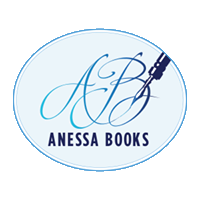 We all work diligently to get our books written and then finally, after weeks, months, or sometimes years, we get to write those magical words: The End.
We all work diligently to get our books written and then finally, after weeks, months, or sometimes years, we get to write those magical words: The End.
But then what? Are we done? Ha! No, of course not, and you, in your heart, know it. There is so much more that needs to be done once the first draft is finished. So, let’s take a look at what that is, and perhaps we can even put together a checklist of tasks that need to be done.
For plotters, the writing of a book doesn’t start with page one, it starts with their character charts and planning out of the story, which means that when they finish writing their first draft they are quite a bit closer to the end than a seat-of-their-pants writer.
For a pantser, the first draft of a book gets all their ideas down. Characters are created. A plot is formed. But there isn’t necessarily a complete story or a balanced story structure there. That comes after the book is written. So for a pantser, once those magical words are written, it’s time for you to go back and see what you’ve got.
The most important thing for both a plotter and pantser to do as soon as they finish a book is put it away. Don’t look at it, don’t read it, don’t even think about it. Do something else. Go ahead and plot your next book or get started writing it, depending on how you roll. Start planning your marketing ideas, contact your cover designer and get them started working on creating a cover for your masterpiece. Work on your social media presence so that when you actually set a publication date (if you haven’t already) you have a good solid base to market to (of course, this is an ongoing task that you should be working on constantly no matter what, but it doesn’t hurt to put a little more time and effort into before you’re ready to release this book).
The point of this is to be able to read your book with fresh eyes once you get back to it. For a pantser, you’ve got a lot of work yet to do. You need to map out your story or write a reverse outline to make sure you hit all those important plot points and that every subplot is completed with all the strings you’ve pulled along through your story get tied up at the end. Once you have finished this outline or story map, it will be obvious to you where you need to go back and fix things, add scenes, or remove those that aren’t doing anything to further the story (remember, every scene must either move your protagonist toward or away from their ultimate goal if it doesn’t seriously consider what the scene is doing, why it’s there, and whether you can just remove it from the book (note: I didn’t say delete it! That scene can be used again either in another book or to send out to your newsletter readers).
Once you’ve gone through your second run-through of your book and reached that wonderful end once more, then you are ready to actually start editing the book.
For plotters, it’s a good idea to do a read-through of your book looking for the same issues as the pantsers. As a plotter, my first round of edits consist of making a table listing all of my scenes with a brief description, whether it moves the protagonist toward or away from their goal, whether the scene has conflict or tension, and any other specific piece of writing craft I may know that I need to work on (sometimes its five sense, sometimes general descriptions, whatever it may be this is where you specifically look to make sure you have that in each scene in the book).
After this second round is done, I do a third read-through for language and grammar issues. Finding better words, making sure the order of the words in my sentences convey the meaning I’m trying to get across, and ensuring my grammar and punctuation are the best I can make them.
Finally, I do one last run-through of my book reading the entire thing out loud. Yes, I may drive the other people now populating my home to distraction but, hey, that’s the price they’re going to pay for having to work at home. I try to speak softly and keep to my office with the door closed, but this last out-loud read-through is vital to ensure that the cadence of my words is smooth and the dialogue sounds natural.
It’s so satisfying to finish writing a book, but it’s only after it’s done does the real, hard work begin.
